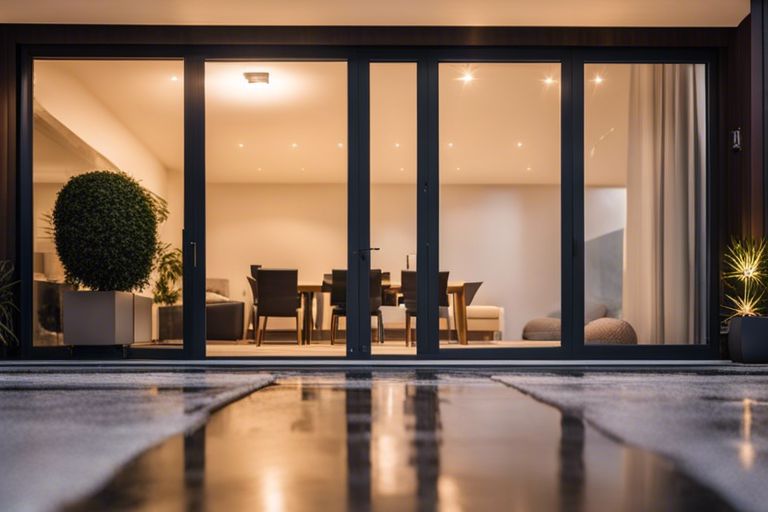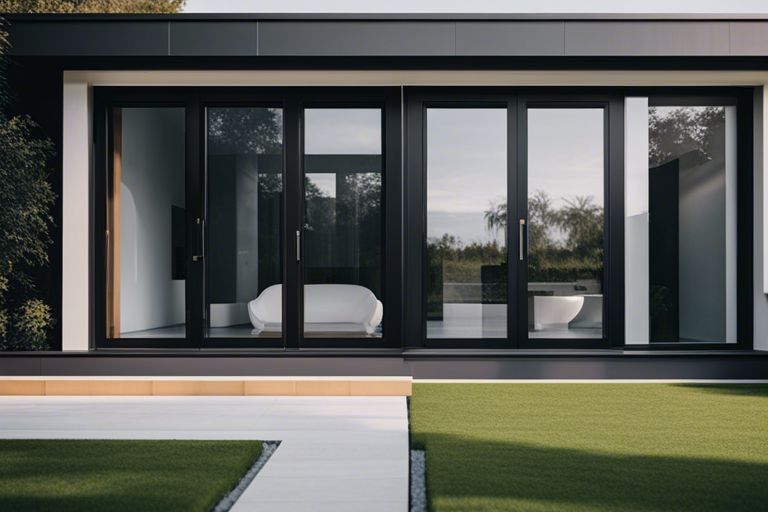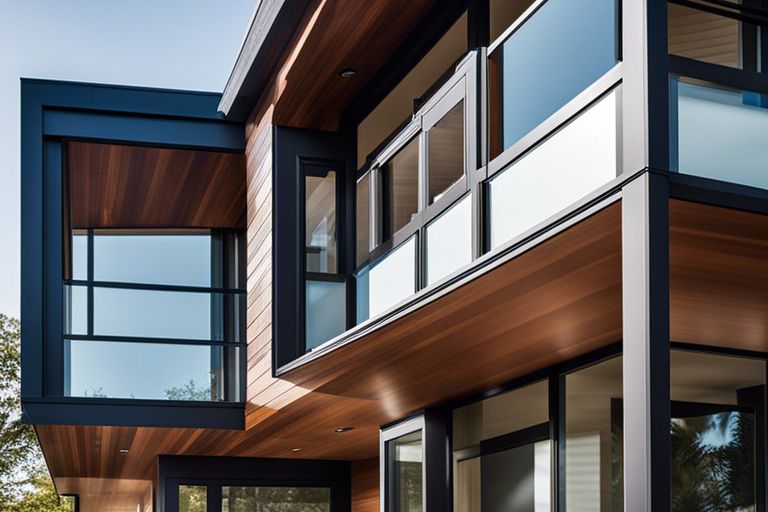When it comes to green roofs, incorporating flat rooflights can be a game-changer. These rooflights not only allow natural light to flood into the space below, reducing the need for artificial lighting, but they also offer unmatched energy efficiency benefits. However, it is crucial to consider proper installation methods to prevent leaks and damage to the roof. By choosing high-quality materials and working with experienced professionals, the integration of flat rooflights into green roofs can enhance both the aesthetics and functionality of a building, creating a sustainable and visually appealing environment.
Key Takeaways:
- Enhancing natural light: Incorporating flat rooflights into green roofs can significantly increase the amount of natural light entering the building, creating a brighter and more inviting indoor space.
- Promoting energy efficiency: By harnessing natural light, flat rooflights reduce the need for artificial lighting, leading to energy savings and a smaller carbon footprint.
- Improving aesthetics and sustainability: Combining flat rooflights with green roofs not only enhances the visual appeal of a building but also contributes to environmental benefits, such as improved air quality and biodiversity.

Fundamentals of Flat Rooflights
Flat rooflights are an essential component in modern building design, allowing natural light to flood into interior spaces. They are commonly used in green roofs to provide both aesthetic appeal and functional benefits. Understanding the fundamentals of flat rooflights is crucial for incorporating them effectively into green roof designs.
Types of Flat Rooflights for Green Roofs
When choosing flat rooflights for green roofs, there are several options available to suit different design requirements. The most common types include fixed rooflights, opening rooflights, and walk-on rooflights. Each type offers unique features and benefits, catering to specific needs in green roof construction. It’s essential to select the right type of rooflight based on the design aesthetic, functionality, and maintenance considerations. Choosing the appropriate flat rooflight can significantly impact the overall performance and visual appeal of the green roof. Any miscalculation in selecting the type of rooflight can lead to inefficiencies in natural light distribution and impact the overall sustainability of the green roof.
| Fixed Rooflights | Opening Rooflights |
| Provide constant natural light | Allow ventilation and roof access |
| Low maintenance | Enhance indoor air quality |
| Durable and weather-resistant | Can be integrated with automated systems |
| Energy-efficient | Enhance natural cooling and heating |
| Enhance aesthetics and visual appeal | Can be customised for specific design needs |
Advantages of Natural Light in Building Design
The incorporation of natural light in building design through flat rooflights offers numerous benefits that contribute to the overall well-being and sustainability of a structure. Natural light not only reduces the need for artificial lighting during the day but also enhances the occupants’ well-being by creating a brighter and more pleasant indoor environment. Additionally, natural light can help reduce energy consumption and contribute to a more environmentally friendly building design.
Furthermore, natural light plays a vital role in promoting productivity and creativity in indoor spaces. Studies have shown that exposure to natural light can improve mood, increase concentration levels, and enhance overall performance. By incorporating flat rooflights that maximise natural light penetration, architects and designers can create healthier and more inspiring environments for building occupants.

Design Considerations for Integration
Structural Requirements
When incorporating flat rooflights into green roofs, it is crucial to assess the structural requirements of the building to ensure that it can support the additional weight. Green roofs are heavier than traditional roof coverings, and when combined with flat rooflights, the load on the structure is increased. It is essential to consult with a structural engineer to determine the maximum load capacity of the roof and make any necessary reinforcements.
Failure to adequately address the structural requirements can result in catastrophic collapse, posing risks to the occupants and damaging the property. It is imperative to follow the structural engineer’s recommendations and ensure that the roof can safely accommodate the weight of both the green roof and the flat rooflights.
Weatherproofing and Insulation
Proper weatherproofing is essential when integrating flat rooflights into green roofs to prevent water ingress and ensure the longevity of the structure. Flat rooflights are vulnerable points in the roof where leaks can occur if not properly sealed. Using high-quality waterproofing membranes and sealants is crucial to protecting the building from water damage.
Moreover, insulation is key to maintaining thermal efficiency and reducing heat loss through the roof. When installing flat rooflights in green roofs, it is important to consider the insulation requirements to meet building regulations and improve energy efficiency. Opting for high-performance insulation materials can enhance the overall thermal performance of the roof and contribute to a more sustainable building design.
When selecting insulation materials, it is advisable to choose options that are both effective in reducing heat loss and environmentally friendly to align with the green roof concept. Consulting with a sustainability expert or a building services engineer can help in making the right choice for insulation that meets the project’s sustainability goals.

Installation and Maintenance
Step-by-Step Installation Process
When incorporating flat rooflights into green roofs, it is crucial to follow a methodical installation process to ensure efficiency and longevity of the structure. Below is a breakdown of the step-by-step installation process:
| Step 1: Planning | Assess the roof structure and design a layout for the flat rooflights that minimises shading on the green roof below. |
| Step 2: Waterproofing | Ensure proper waterproofing measures are in place to prevent leaks and water damage to the roof and greenery. |
Best Practices for Maintenance and Upkeep
Once the flat rooflights have been successfully installed, it is essential to establish best practices for maintenance and upkeep to preserve their functionality and prolong their lifespan. Here are some key guidelines to follow:
| Regular Cleaning | Keep the flat rooflights clean from debris and dirt to ensure optimal light transmission and prevent blockages. |
| Inspection Routine | Implement a regular inspection schedule to check for any damage, leaks, or signs of wear and tear that may require immediate attention. |
Regular maintenance of flat rooflights is crucial to prevent potential issues such as leaks and structural damage. By following best practices and addressing any problems promptly, you can ensure the longevity and efficiency of your green roof system incorporating flat rooflights.
Environmental and Energy Implications
When incorporating flat rooflights into green roofs, it is essential to consider the environmental and energy implications of this integration. Green roofs provide numerous benefits in terms of sustainability and environmental impact, and the addition of flat rooflights can further enhance these advantages.
Enhancing Biodiversity with Green Roofs
Green roofs play a crucial role in enhancing biodiversity by providing habitats for a variety of plants, insects, and birds. The introduction of flat rooflights into green roofs can create additional opportunities for flora and fauna to thrive, further enriching the ecosystem within urban environments. This integration supports the conservation of biodiversity and contributes to creating healthier and more sustainable cities.
Moreover, the juxtaposition of natural light from the flat rooflights with the greenery of the roof can attract a diverse range of wildlife, from pollinators to birds, fostering a more balanced ecosystem. By incorporating flat rooflights into green roofs, we can not only enhance biodiversity but also promote the overall health and resilience of urban ecosystems.
Energy Efficiency and Sustainability Benefits
Integrating flat rooflights into green roofs offers significant energy efficiency and sustainability benefits. The installation of rooflights allows natural light to penetrate indoor spaces, reducing the need for artificial lighting and consequently lowering energy consumption. This not only decreases utility costs for the building occupants but also minimises the carbon footprint associated with artificial lighting.
Furthermore, the combination of green roofs and flat rooflights assists in regulating indoor temperatures by providing natural insulation and reducing heat gain in the summer months. This results in lower energy demands for air conditioning, contributing to a more sustainable built environment. By harnessing the synergy between green roofs and flat rooflights, we can maximise energy efficiency and promote sustainable building practices for a greener future.
Incorporating Flat Rooflights into Green Roofs
Integrating flat rooflights into green roofs is a sustainable and innovative approach to maximising natural light while maintaining energy efficiency and environmental benefits. By combining the benefits of both rooflights and green roofs, buildings can enhance indoor lighting, reduce the need for artificial lighting, improve thermal insulation, and promote biodiversity. The integration of flat rooflights into green roofs not only enhances the aesthetics of a building but also contributes to its overall sustainability and eco-friendliness. This approach is a testament to the harmonious coexistence of modern technology and nature, creating buildings that are not only energy-efficient but also environmentally conscious.
FAQ
Q: What are the benefits of incorporating flat rooflights into green roofs?
A: Incorporating flat rooflights into green roofs allows for natural light to penetrate into the building, reducing the need for artificial lighting and decreasing energy consumption. It also helps to create a more aesthetically pleasing environment and can improve the overall well-being of the occupants.
Q: How do flat rooflights affect the thermal performance of green roofs?
A: Flat rooflights can enhance the thermal performance of green roofs by providing additional insulation and helping to regulate the internal temperature of the building. This helps to reduce heating and cooling costs, making the building more energy-efficient and sustainable.
Q: What considerations should be taken into account when installing flat rooflights in green roofs?
A: When installing flat rooflights in green roofs, factors such as waterproofing, drainage, and maintenance access need to be carefully considered. It is essential to ensure that the rooflights are properly sealed to prevent leaks, that drainage systems are designed to handle excess water, and that there is safe and easy access for cleaning and maintenance purposes.






